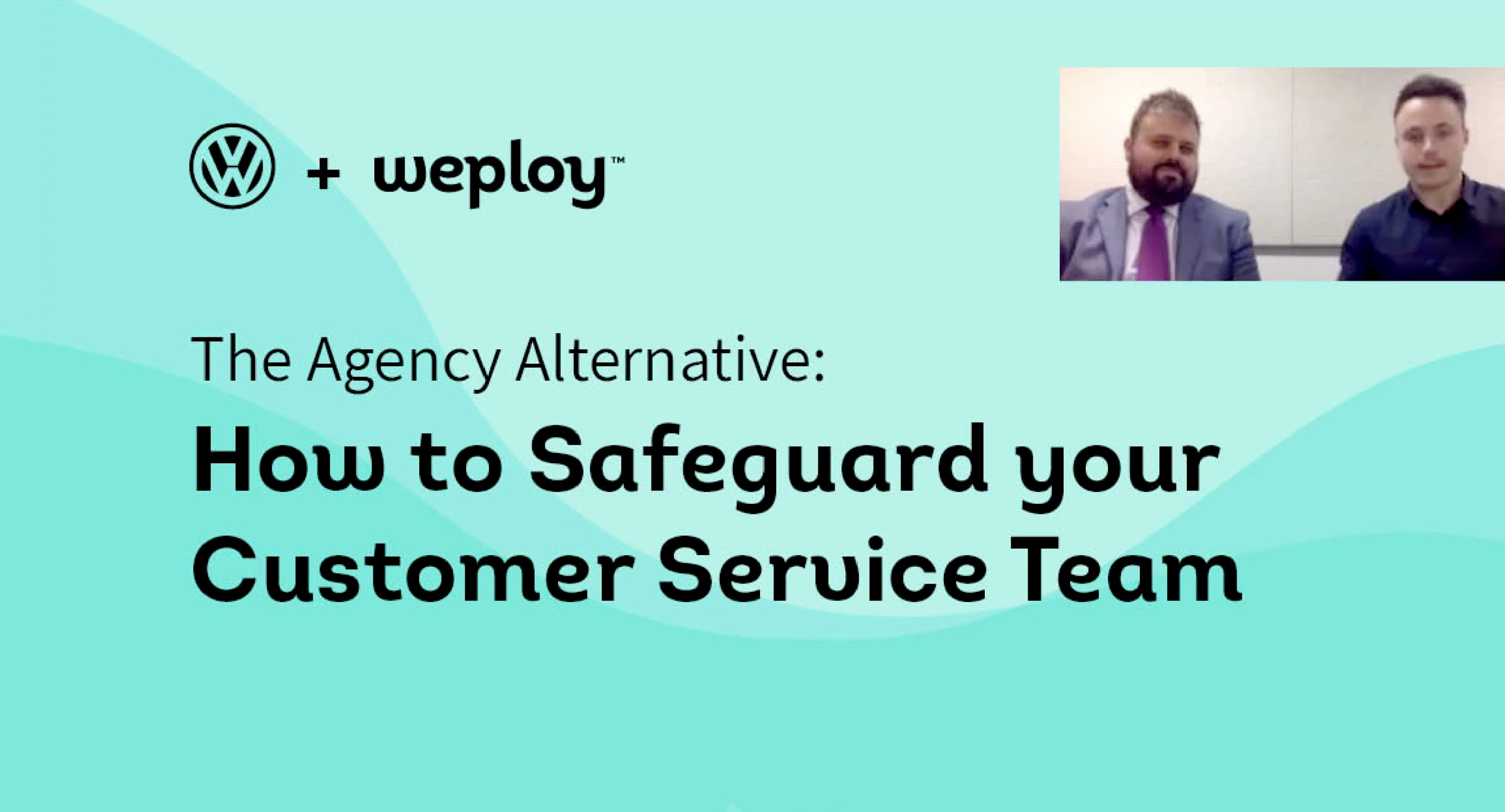The Top Priority for CX Leaders in 2020

At the start of a new year, business leaders are in planning mode, laying out the foundations for new targets and aligning strategies on how to get there. For many, the tried and tested motto “The Customer Comes First”, still stands true, but with all the strategies out there for improving Customer Experience, what should be the top priority for success in 2020?
Words like innovation, mobile-first technologies and automation have been trending topics in recent years, but the experts are going full circle of late, and going back to basics. Trust is increasingly becoming a common denominator that is consistent amongst all of the wider business philosophies and wider, cultural changes that have become known as best-in-class, Customer-Centric CX. Business-consumer trust, but also peer-to-peer trust between the employees within organisations. Trust, which unfortunately is not prioritised in most organisations, can be a catalyst for other cultural changes and productivities that are essential for achieving best-in-class customer service outcomes. Here are a few examples:
Higher Empathy
Neuroscientist and the author of Trust Factor: The Science of Creating High-Performance Companies Paul Zak conducted several scientific experiments on the neuroscientific characteristics of staff at companies that signified low trust and those that reported high trust levels. His studies proved the relationship between Trust and Empathy and that they are both driven by the same brain chemical - Oxytocin. His experiments, conducted over several years of research, showed that employees in firms with high-trust cultures are 11% more empathetic towards their colleagues, and naturally, towards their customers too, which is a trait essential for customer service excellence. As part of the Weploy on-boarding process, we test for certain traits like Empathy within our Customer Service talent pool. To learn more about our vetting process, find out more here.
Better Collaboration
In his 2017 book, “The Trust Factor”, Paul Zak reveals that employees in high trust companies aren’t just more empathetic, they are more engaged, more productive and more energetic too. Any Customer Service, or Business leader knows the danger of working in silo with team members. Employees within companies that have higher trust levels are likely to feel up to 66% closer to their colleagues which helps them to work together better which in turn, creates better outcomes for their customers too. THink about how frustrating it is if you’re halfway through a call with someone and you’ve given them your name, your address, phone number and email, only for them to refer you anonymously to another department, without passing on the details.
Lower Burnout
The increased stress levels due to lack of trust within companies is a contributing factor to the general rise in stress amongst millennials today. If you trust the people you work with, that stress is naturally a lot easier to manage. Employees aren’t wasting energy worrying about being publicly disciplined, being fired out of the blue or being taken advantage of in work situations.
Happier Customers
The metrics that may speak the loudest to Customer Experience leaders in Zak’s experiments, were the Customer Satisfaction scores. Firms that scored well in Trust ratings had customers that were 50% more loyal than those that scored poorly, and the Customer Satisfaction scores were a whopping 96% higher. According to indsutry body Great Place To Work, high trust companies have CS scores that are between 2.8 to 3.4 points higher than their low-trust competitors.
How to Cultivate a Culture of Trust
The most forward-thinking companies know that the best way to earn employees trust, is to put their trust in the employees first. Don’t be afraid to share some company losses as well as the wins, as long as they’re framed positively with a learning alongside. Consider relaxing some rules. At Airbnb, managers no longer have to approve expenses below $500... Productivity has gone up; spending hasn’t. Microsoft Japan trialled a four-day work week, entrusting staff to manage their work in 4 days rather than 5. Productivity is reported to have increased too.
Tips for Internal Trust
Between individuals, the easiest way to build trust is to find common ground. Humans are more trusting of people we think are like us. The connection can be based on anything–age, gender, what sport you played at school, even coffee preference.
Trust in leadership grows when C-Suite level leaders are willing to be more human and less guarded at work. Showing vulnerability is to say, “I trust you not to use my weakness against me.”
There are many ways to show vulnerability. One big one, especially for leaders, is asking for help. Employees in the healthcare industry can ask for special emotional support from colleagues during times of high stress or trauma by calling a “Code Lavender.” They can wear a special bracelet so others know they’re struggling, or can take advantage of relaxation tools such as massage, music, and aromatherapy.
Another way to show vulnerability is to admit when you were wrong. Warren Buffet critiques himself in his letters to Berkshire Hathaway shareholders every year. It doesn’t hurt his credibility. If anything, it makes people trust him more. Humans are skeptical of others who seem too “perfect”.
The Value of Being Honest
Encouraging a culture of honesty promotes feelings of psychological safety which can be defined as a sense that your company is a safe place to take risks. According to data from Google’s People Analytics team, psychological safety is what sets great teams apart from average ones. It’s a must for any company that hopes to innovate their CX function or process - without risk, there can be no hope for change/improvement.
Conclusion
These are just a few of the many ways to build trust in an organisation and how building that trust amongst your Customer Service team is certain to improve your Customer Experience quotient. To learn more about other ways to improve your CX scores, check out the post below.

For successful business in todays’ unpredictable environment, having an agile mindset when it comes to resourcing is critical. Customer Service teams in particular are under pressure to deliver on expectations and being prepared for flux in demand is essential to maintain their levels of service. We spoke to Customer Service leader Tristan Fardy on a Webinar recently all about how he is able to consistently meet high levels of service, and he admitted his number 1 priority is being able to right-size his team during out of cycle increases.

Alice is a Customer Experience professional from Surrey in South East England. She has experience working with some of Australia's largest Insurance and Financial institutions and earned a FULL 5* Review on the Weploy platform. Alice is passionate about interacting with people, making a positive impact, and cannot pass up a glass of red wine. Find out more about Alice and her background in this Weployee of the Week feature.

Best Practices for Customer Service Agents in the New Normal
If businesses want to survive in the post-COVID world, they're going to need to prioritise a loyal customer base. Indeed, relying on your customers is now more important than ever with unprecedented challenges coming up on a regular basis.
Streamline your hiring
Business support staff with no hidden fees. Start hiring anytime.
